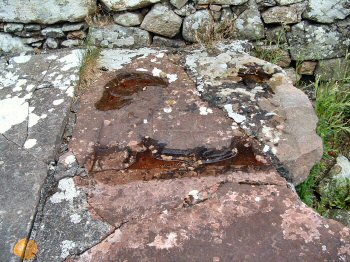‘On the day of a funeral, a large concourse of people assembles who are plied with spirits, generally two glasses. The corpse is then placed on the bier which is covered with a pall. It is then hoisted on men’s shoulders and they are followed by the keeners who intone alternatively all the way to the burial place. The bearers are relieved frequently by others.
It often happens that if another funeral should appear from a different direction that a scene of competition commences for precedence. Sometimes it turns into strife or riot. In explanation of this custom we have heard it said that when graveyards were not hedged about, it was usual to post a sentinel at night to watch the graves from wild beasts and every other thing to which they might be exposed. (Editor: perhaps the sensibilities of his religious office caused Rev Nelson not to mention the greatest danger from grave-robbers). This office fell to the relatives of those who had been last buried in the cemetery.’ [Nelson, 1840]
